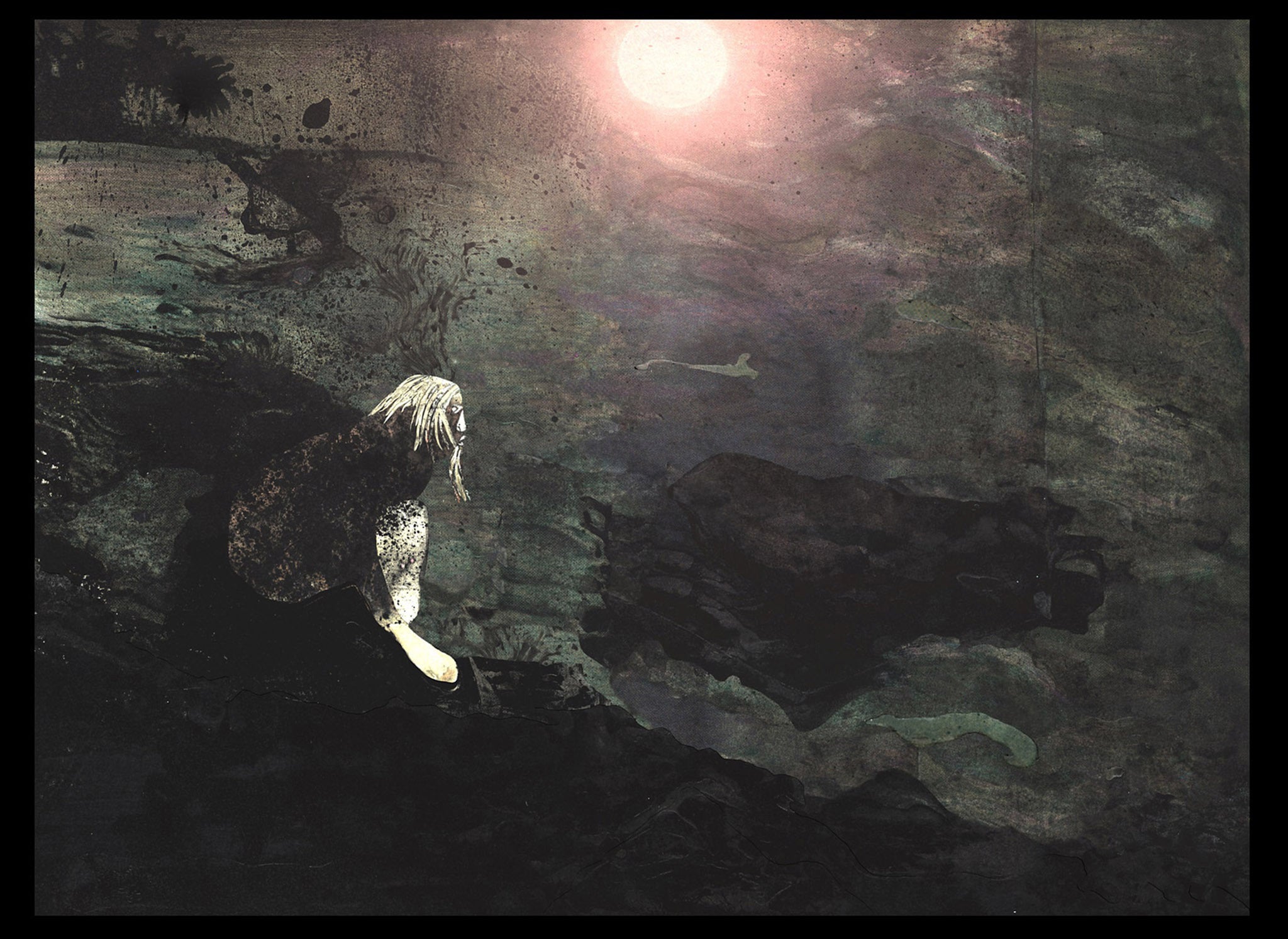Ellen Gallagher, New Works, art review
Hauser and Wirth, London

Ellen Gallagher has compared her art practice to scrimshaw – the sailors’ skill of carving images into bone while at sea on whaling ships. The underwater theme of this exhibition is cryptic, and reveals a violent history.
Some of these paintings, which combine abstraction with collage, are exceptional. In particular Stabilizing Spheres and Dr Blowfin’s Black Storm. Both were made earlier this year, and so were not included in Gallagher’s Tate solo exhibition last summer. They are intuitive and technically complex, serene and troubling. They are strikingly beautiful but rooted in politics.
Gallagher, 48, is an artist of African-American and Irish-American origin, who lives in Rotterdam and New York. Her influences range from Gertrude Stein to sci-fi to the music and poetry of Sun Ra. She grew up in Providence, Rhode Island, a maritime city with a history of whaling. She studied creative writing at Oberlin College and spent a semester on a schooner examining water snails. At the time, she wondered why she was doing that – but it has paid off. These paintings link myths of the sea to music and the injustice of slavery.

Dr Blowfin’s Black Storm (2014) is a large ink and graphite work on canvas with a pale, aquamarine background, which calls to mind the surface of a swimming-pool. The colour is very gently artificial. Lines of deeper blue have been painted onto it. This is Gallagher’s trade-mark: she is influenced by the minimalism of Agnes Martin.
The cool blue is a counterpoint to the raging mythological goddess whose face floats on the upper part of the canvas. She is a collage – her face is comprised of dense materials, cut up and outlined in bright colours. Her eyes are cartoonishly rolled upwards. Her skin is dark brown and black. She is a bold presence. The image is startling and sudden, as though the face had emerged from the watery depths to wreak revenge on the viewer.
Or to express her righteous indignation. The painting is named after a song by Detroit electro band, Drexciya, which channels “aural hallucinations from The Middle Passage.” The latter was the voyage of slave ships from Africa to America, during which many slaves drowned. The song imagines “a black Atlantis made up of women and children who went overboard,” Gallagher has explained. “It’s this kind of militarized zone of the underwater sea world.” It seems that the goddess in the painting will return to the surface of the water forever, a reminder of those who drowned.

Equally affecting is Stabilizing Spheres (2014), likewise named after a Drexciya song. This too is a large ink and graphite work. Tubular shapes in the gentlest of blues and yellows writhe all over the canvas. Bits of dark collaged hair appear and disappear. In fact, this is not an abstract image, but a view from a slave ship of women and children drowning in the sea. The tubular shapes are waves and the face of that enraged goddess seems to have vanished beneath them.
14 March – 3 May
Join our commenting forum
Join thought-provoking conversations, follow other Independent readers and see their replies
Comments